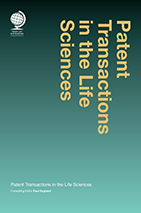Life sciences patent licences - duration of licence
When negotiating a patent licence, there are a number of general issues that must be considered and agreed. Here we consider licence duration:
The term of a patent licence should be calculated to end with the expiry of the patent(s) being licensed, or for as long as the invention is required by the licensee, if that is a shorter term. If the licence term ends before the licensed patent(s) expires, the licensee may not be able to continue its activities with the technology protected by those patents without the risk of infringement. On the other hand, if the licence term continues after the expiry of the licensed patents, this may result in an obligation to continue royalty payments unnecessarily. However, it is common to require royalty payments for a specified period of time following the first commercial sale of a product as a way of deferring the consideration for the licence.  This is especially so in licences for research tool patents, where the sale of the end product may not infringe any of the licensor's patents, or the licensor's patents may have expired by the time any end product is sold. The parties may continue to deal with each other on the same terms as in the original licence after the end of the term, but such periodic licences may be terminated on reasonable notice.
This is especially so in licences for research tool patents, where the sale of the end product may not infringe any of the licensor's patents, or the licensor's patents may have expired by the time any end product is sold. The parties may continue to deal with each other on the same terms as in the original licence after the end of the term, but such periodic licences may be terminated on reasonable notice.
This toolkit article is an extract from Patent Transactions in the Life Sciences (Globe Law and Business Publishing, September 2014).
If you have any questions on this article or would like to propose a subject to be addressed by Synapse please contact us.




